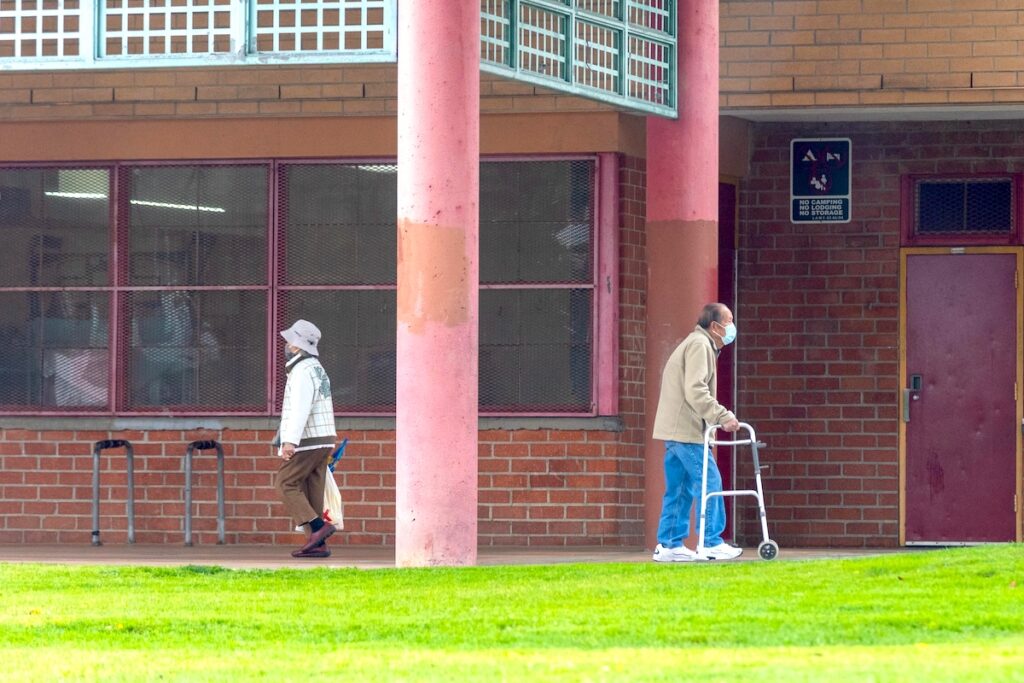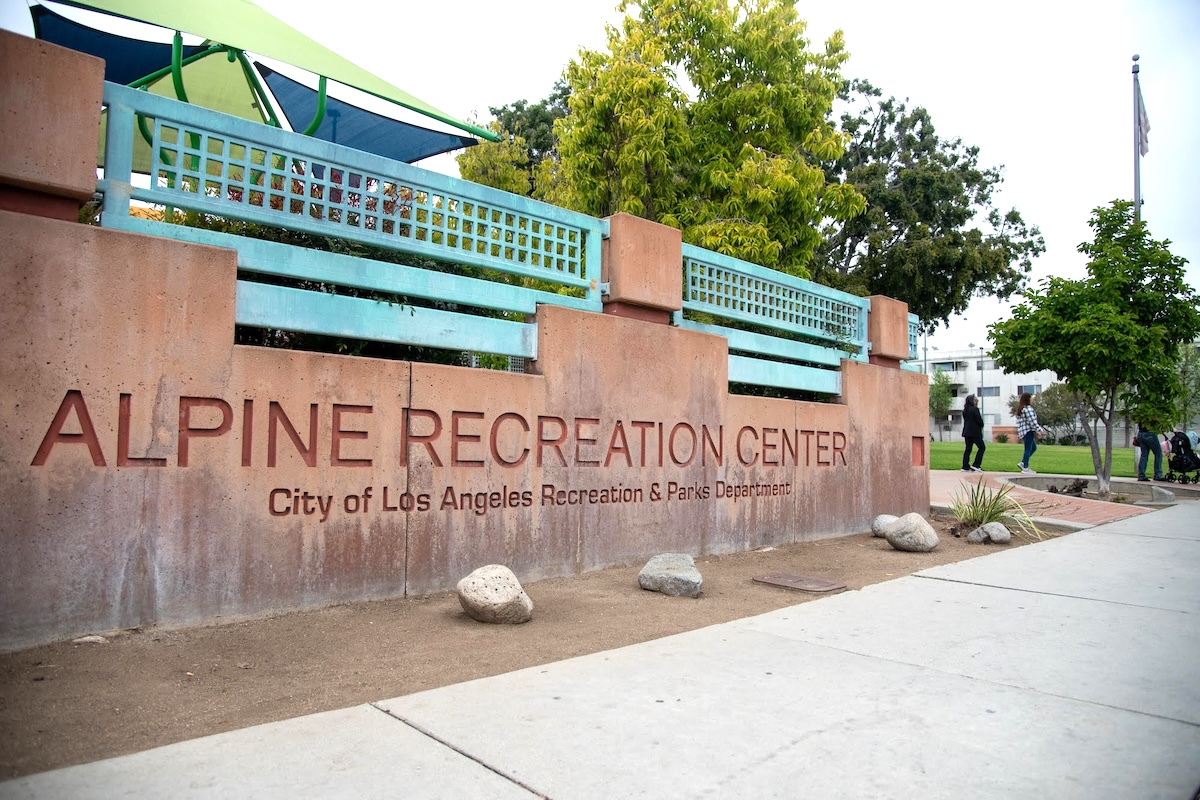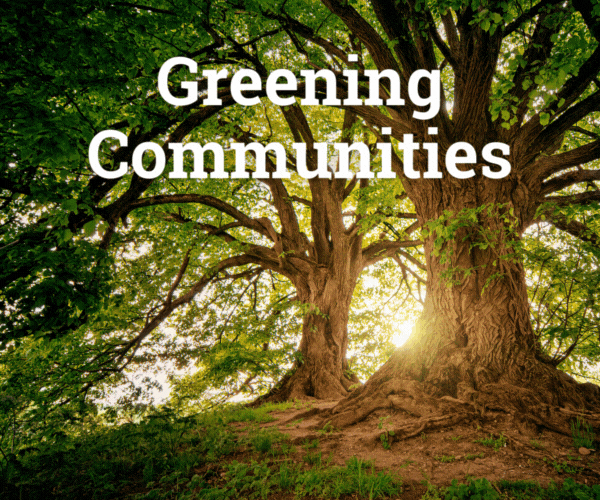Keyang Pang | UNE
Alpine Recreation Center is always bustling with activity. In the early morning, as the sun rises, elderly Chinese residents gather across the lawn to practice Tai Chi. Once the center opens at 10 a.m., local families begin arriving to spend their day on the grass and at the playground. Grandparents push strollers with their grandchildren, while others use walkers or bring their dogs along.
For decades, Alpine Park then Alpine Recreation Center has been the only park and open space within the residential area of Los Angeles’ Chinatown. Over the years, it has served as a hub for recreation, culture, sports, and community services, providing a haven for the elderly Chinese American residents, the new generation Chinese Americans, and the newly arrived Chinese immigrants.
It’s noon now and Mei pushes her one-year-old grandson in his stroller through the park. When I attempt to communicate with her in Mandarin and English, she waves her hand, indicating that she only speaks Cantonese. Through gestures, she explains that her daughter and son-in-law are at work, so she takes care of her grandson. During the day, she takes him for walks around the neighborhood, spending most of her time at Alpine Recreation Center because of its well-equipped playground, which is ideal for children.
Mei acknowledges that a new and much larger park (Los Angeles State Historic Park) has recently opened on the other side of Chinatown, but she finds it too far and too big. She prefers Alpine Recreation Center because it is more comfortable, and she can converse in Cantonese with many of the people there.
In the afternoon, after Castelar Elementary School lets out, children flood into the park. Students attending Chinese classes at Chinese Consolidated School across the street also wait there before their lessons begin. As an important community center, Alpine Recreation Center offers various after-school programs and summer camps, including basketball, table tennis, badminton, soccer, and martial arts. Basketball is a highlight of the community, with league games being especially popular. Both the indoor and outdoor courts are always packed with young people eager to play.

Ruby Lei, a pre university student from Guangzhou, China, who arrived in the U.S. just over a month ago, told the reporter that she is currently staying with relatives in Chinatown. She visits the park almost every day after school hours, where she meets new friends.
“I play basketball with my cousin and his friends all the time. We come here on weekends, because the park is even livelier, with numerous basketball games and competitions.” She said.
Ruby notes that the park reminds her of those in China, though she wishes there were more green spaces.
On weekends and holidays, city departments and community organizations frequently hold events at the Alpine Recreation Center. The grocery distributing events attract Chinese seniors and the young kids and families love the annual Halloween costume contests and the Easter egg hunt, for the upcoming event, Los Angeles City Council member Eunisses Hernandez’s office has prepared thousands of eggs.
Lisa Lin, a downtown Los Angeles resident, often brings her baby to the playground. She prefers it over the playgrounds and parks in downtown because “it is cleaner, safer, and mostly frequented by Asian American families” she said, “They even have a friendly security guard here day and night.”
Alpine Recreation Center has its own social media accounts where upcoming events and classes are occasionally promoted. However, according to the staff, most activities don’t require formal advertising. “In Chinatown, word of mouth among the Chinese community spreads quickly, and events are often packed. That’s the power of a real community,” one staff member explained.
I met Sharon Wong as she was rolling up her yoga mat, preparing to return to work. She works at a nonprofit organization nearby and comes to the park’s lawn to rest during her lunch breaks. On nice days, she naps on the grass, but with the recent overcast weather, she has just been sitting outside for fresh air. She enjoys the park—not because it’s large, but because the presence of many Chinese families makes it feel safe to her.
Ms. Mai, who also works nearby, uses her lunch break to unwind at the playground. While some of her coworkers spend their lunch breaks eating and chatting indoors, she prefers a quiet moment to relax, listen to music, and recharge before returning to work.
Beyond the Chinese community, Hispanic residents also enjoy this neighborhood.
The Lopez family was playing with remote-controlled cars in the park that day. They explained that although they live in Boyle Heights, their children attend after-school programs here, so they have grown fond of the park. They often see many Chinese American teenagers practicing martial arts and playing basketball, while elderly Chinese residents stroll, chat, or simply sit quietly.
“Even though there is a language barrier, we can still feel the positive energy of the community, which is special.” They said.
Alpine Recreation Center is the “first and last harbor” for Chinese Americans not only because of its location and convenience but also because it carries the cultural memories and social connections of multiple generations. Whether as a first stop for new immigrants or a final gathering place for elderly Chinese residents, it remains a warm and welcoming public space at the heart of the Chinatown community.
This story was produced by Ethnic Media Services in collaboration with the Laboratory for Environmental Narrative Strategies (LENS) at UCLA as part of the Greening American Cities initiative supported by the Bezos Earth Fund.





